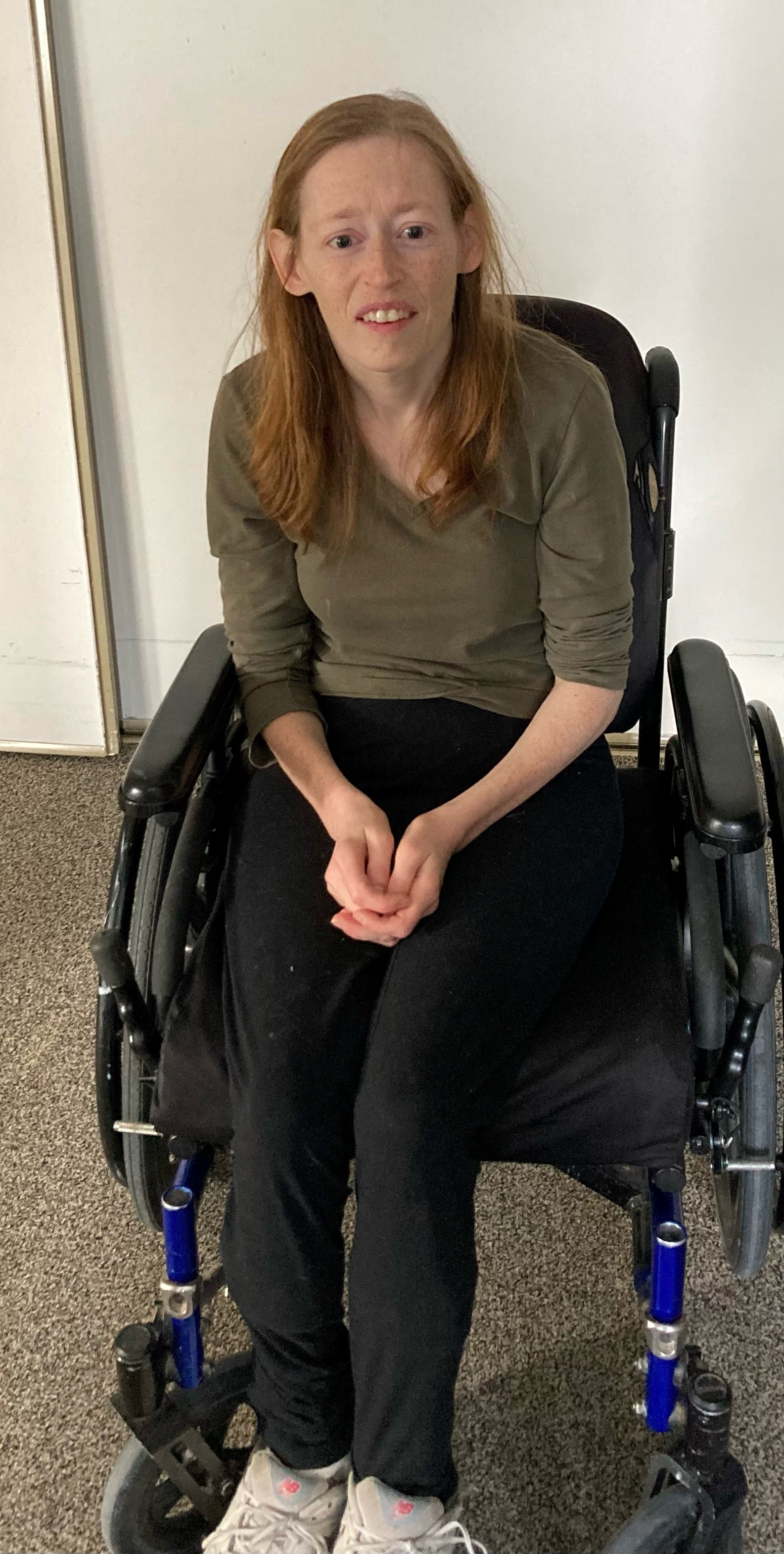Julia shares with us her experiences as an active person who uses a wheelchair as well a cane, and what drives her passion for educating younger people on what her white cane means.

When did you start using a white cane and how did you learn to use one?
I’ve had sight loss since I was born but didn’t really notice it until Grade 5. Although it’s continued to progress over time, I still have some level of sight. My background is in recreation and I am a very active person. I love horse riding and have won a bronze medal in swimming. I use a wheelchair, so don’t use my cane all the time. I was in Grade 10 when I first learned to use the cane with an Orientation and Mobility Specialist. At first, I learned by experimenting and practicing on a sidewalk. Without a wheelchair, it is much easier and just requires a back-and-forth motion with the cane. With a wheelchair, it is much harder. I learned by watching others to see how they managed, research and practice was key. I always have my cane with me, but I mostly use the cane in places that are not very familiar. I also use apps like Aira to help me navigate, which connects me to a live agent over the phone who explains the visual surroundings to me.
Have there been situations where someone hasn’t understood what your cane means?
I haven’t experienced much confusion from adults about my cane, but there have been many times where little kids were unsure of what my cane was and what it means. I don’t take personal offence to this as I know it mostly stems from the kids’ curiosity. Often, kids will refer to it as a ‘stick’ and ask why I have it. I use simple terms to explain it and find educating kids fun and enjoyable. I think it’s so important to educate younger people as removing negative attitudes begins in childhood. One way to educate the younger population could be through sending people who use white canes to schools or other organized events to discuss white cane and share their lived experiences. I want people to grow up thinking that a cane is “normal” - nothing different and nothing to be nervous about. I also want people to feel comfortable enough to approach someone with a cane and not be afraid to ask if they can help.
What do you wish others knew about white canes and the people who use them?
I hope that people will look at the positives of the cane more than the negatives. Yes, there’s a lot of stigma around the white cane, but it is also a great accessibility tool that brings many benefits to its users, and we should focus more on that. I also hope that people will look at the person before the cane and wouldn’t refer to me as a “white cane user” but instead a “person who uses white cane”. This is a simple example of people first language that puts the individual before the accessibility device.